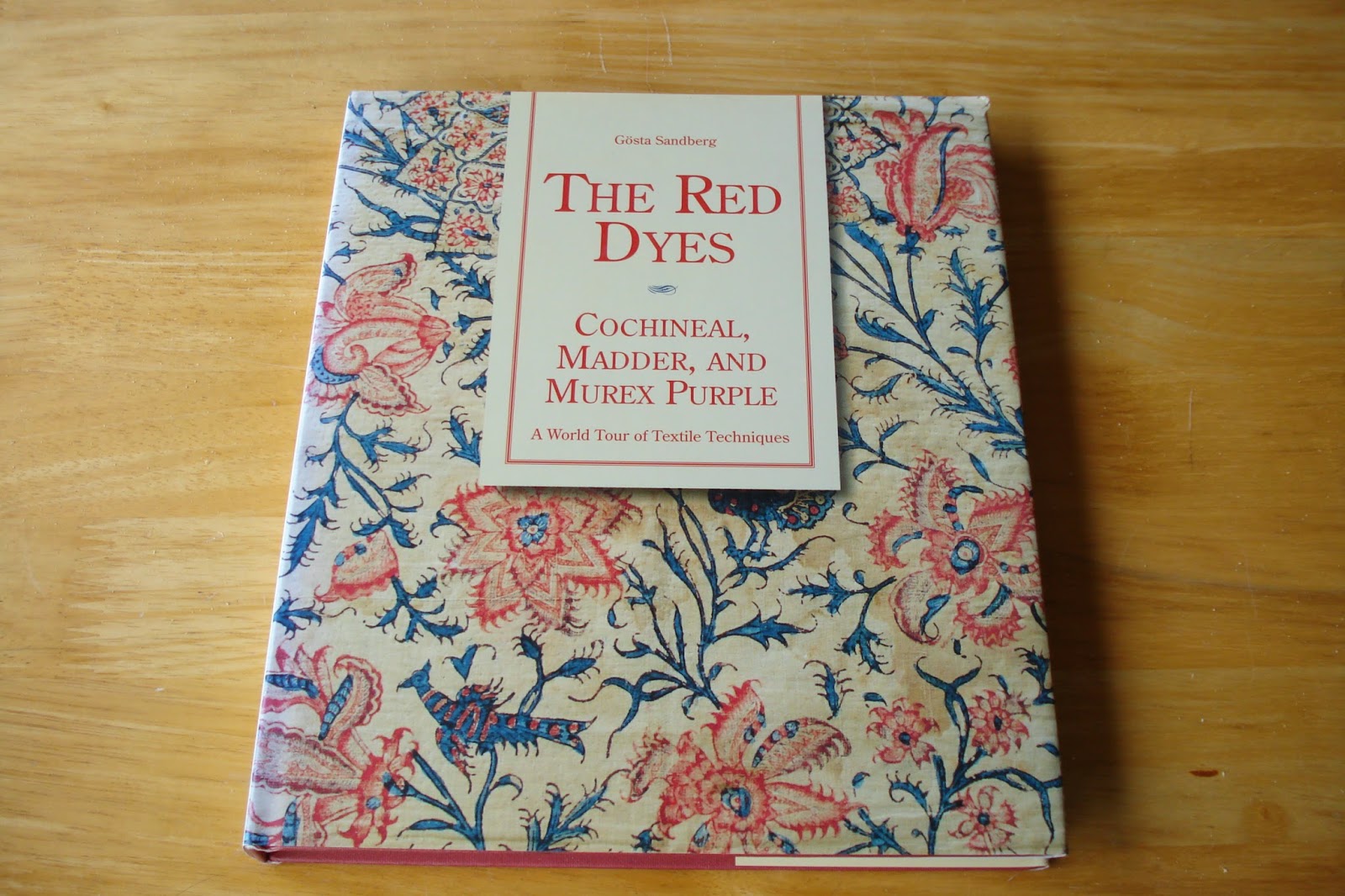I have recently been buying books on the history of crafts, and also the WI. Many have interesting illustrations as well as text, which will come in useful for my research.
Here is a book which accompanied an exhibition on British crafts in the 20th century, by Tanya Harrod. It covers the periods1916-1939, 1945-1969 and also 1970-1990. A huge, well researched book which will be a valuable resource. Many different crafts are covered, including textiles. Much more than a coffee table book, with a price to match.
A book on the Welsh wool textiles. Quilts are only briefly mentioned. Some interesting photos...
A book on red dyes -cochineal, madder and murex....wide range of dyes and fabrics from around the world...
Durham County Federation WI booklet....very brief, and came with extra templates....I have many of these templates already, as The Quiltery used many of the exact designs in their packets of quilting designs, apparently without permission, or perhaps the templates were not covered by copyright?
I have seen this book for many years, but it was not of interest to me;
published in 1985 it concentrates on english paper piecing, American patchwork and applique. This seemed very old fashioned at the time and I was ready to get on with newer things..now it is of historical interest. Some traditional handquilting designs are shown but the American influence in quilt design and technique is clearly evident by this time.
A NWFI publication from 1979, this has a section on patchwork and quilting, which concentrates on piecing over papers. Hand quilting is covered in 6 pages, and illustrated with perhaps the worst example of quilting that I have seen in a long time! Very representative of post WWII quilting....
More WI leaflets...I wasn't sure if linen quilting would refer to the fabric or to bedclothes/sheeting, but it seems to be quilting using linen cloth. Covers "flat quilting" (no padding), corded quilting and padded quilting. Published 1964, price one shilling (5 pence). In this bundle were also leaflets on canvas work,
Eiderdowns using sheepswool and terylene, and how to make soft lampshades.
Anf finally, a book on WI textiles...the result of a survey on textiles from the various groups around the UK. mostly banners, tablecloths and other textiles used at WI meetings, but does include some quilts. The WI was instrumental in keeping quilting going after WW2.






















